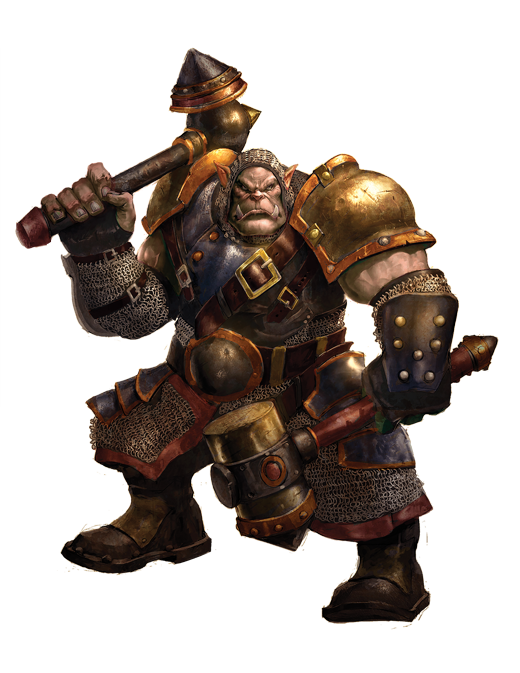
Insider 8-17-2015

In this final article on the development of The Undercity, we’re talking about the last major component of the game: the villains and the system that controls them.
If you’ve read the previous entries in this series(1, 2, 3, and 4), you know our aim from the earliest stages was to create a fully cooperative game. Given that goal, I had to come up with a way to automate the villains so players could focus on fighting against the game rather than making decisions about what the villains would do. But first, I had to decide who those villains would be.
Cephalyx were already established as the big bad guys in the game, so I knew we’d be bringing in drudges and a monstrosity of some sort, but we needed a lot more villains. We also needed our antagonists to fit in on the streets of Corvis, as the campaign’s overall plot had the heroes initially become involved in a seemingly small-scale investigation that only slowly exposes more of the true danger to the city.

The Iron Kingdoms setting offers plenty of different threat levels, and a gang of thugs and slightly tougher villains was the level we were after for The Undercity. Looking over the collection of miniatures produced by Privateer Press, I quickly found characters like the Croe’s Cutthroat troopers, which make up the bulk of the villains in the game, and the Ogrun Bokur, which could be tweaked somewhat to become one of the more dangerous street level threats for our heroes. My favorite villains are the figures that were originally sculpted for the Iron Kingdom’s RPG line but never received WARMACHINE rules, such as the gobber rogue I borrowed to be the gobber cutthroat in the board game.
Now that I had my villains, I started working out how they would go about being villainous. As I mentioned last week, early on I thought the chapters of the campaign would be structured more like RPG scenarios, including starting each scenario with most of the villains the heroes would face already in play. After trying out a few rough scenario ideas, it became clear it was going to be very challenging to balance the difficulty level using this idea. The villains on the board would need to be tough enough to stick around for a while, but they couldn’t be so deadly that the heroes wouldn’t have a chance to win.
This is when I began shifting to the much more video game–like idea of small numbers of villains on the board when a scenario begins but more villains constantly spawning each turn. I sat down to create a spawning system that was random but also easy to understand, taking a bit of inspiration from the enemy reserves concept in our LEVEL 7 series and adding an adjustable system for determining which villains spawn.

In the end we had a very flexible system that could handle a variety of villain types. Each villain in the reserves would have a number associated with it, and every chapter map would include numbered passages to indicate where villains can spawn. The flexibility of this system lies in the ability to adjust both sets of numbers to suit each chapter’s needs.
A much larger hurdle was figuring out how the villains would activate. I’ve played a lot of cooperative games, and one of the things I most wanted to avoid was having predictable villains. Since I didn’t want all the villains to activate every turn, I decided to use a deck of Villain Action cards, drawn at the end of each player’s turn, to determine which villains would activate. This system worked almost exactly as I wanted it to…but it still wasn’t quite unpredictable enough.
The Villain Action cards specified villains using only two criteria: proximity to heroes and type of villain. I needed a third category. After a bit of thought, I decided to use color. By making each villain figure either red or blue, I gained another way to distinguish them on the cards and on the board. As a bonus, I also gained ideas for other ways to use these colors in the villain system, ideas that eventually developed into the game’s color priority rules.

With colors added into the mix, I felt the villains were just the right amount of unpredictable, but I now had to go back and make certain special villains a little less random. For this I created the “significant character” rules, which has the significant villains activate at a certain point in the initiative order, functioning much more like the RPG-style villains I originally imagined.
At this time I was also working on the rules for what the villains would actually do when they activated. We knew that tying The Undercity into the mechanics of WARMACHINE and the Iron Kingdoms RPG meant the villains would have numerous stats, so I started by roughing out stat cards for each villain type.
I knew I wanted to give the villains different ways to react to the positioning of the heroes on the map, but the stat cards had room for only so much information. To include the rules I had in mind, I needed to create a tactics system that could be represented easily with icons. The process of shaping this system continued through the early stages of scenario playtests, with some concepts being broken down into multiple rules and some groups of rules being consolidated into a single rule. Eventually we had a workable set of tactics rules that covered a variety of situations.
At this point, the game had taken its final shape, and all that was left was playtesting until all the scenarios felt right. And now you can see the results of the entire development process firsthand. Thanks for joining me for these articles—and have fun exploring The Undercity!
